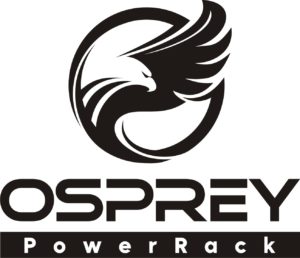The Osprey PowerPlatform® Revolutionizing Ground Mount Solar for Previously “Off Limits” Sites
The Osprey PowerPlatform® is Once Again Revolutionizing the Industry by Making Ground Mount Solar Viable for Previously “Off Limits” Sites

There are many sites and circumstances where traditional ground mount foundations are impractical or impossible to use. Examples include brownfields, leach fields, capped landfills, hillsides, high wind areas, and hard, sandy or rocky soil conditions. Facing significantly higher installation costs, many EPCs choose to pass on these and other challenging opportunities.
When Nuance Energy designed the Osprey PowerPlatform, we made certain it would work well on both easy and challenging projects. For the easy sites that are fairly level with full access for heavy equipment and clean clay soil with good holding strength, Osprey affords significant time and cost savings over the use of helical piles or ground screws. And for the challenging sites where helical piles and ground screws are not viable, Osprey’s minimally-penetrating earth anchor foundation system provides a far simpler and much more affordable alternative to ballasting with concrete blocks.
The primary reason for these advantages derives from Osprey’s innovative use of earth anchors, which are utterly simple to install and have remarkable holding strength. Earth anchors are not new, of course, having been long used by electric utilities for guy-wiring powerline poles. What is new is the way Osprey enables this proven technology to be used successfully in ground mount solar foundations virtually anywhere, including in previously “off limits” sites.
An equally significant advantage derives from the way the Osprey PowerPlatform gets installed: quickly and easily by small, unskilled crews using only handheld power tools. Once installed, the actual holding strength of each and every earth anchor is measured in real-time with a simple, foolproof test using a portable rig. Measuring the actual (vs. calculated) holding strength of every earth anchor reduces or eliminates the need for geotechnical reports and related inspections, and effectively assures being able to meet all engineering specifications.
One final advantage derives from the ability to fold the entire Osprey PowerPlatform as a complete, modular unit (with the solar panels attached) for compact storage and transport. This makes Osprey “portable” and, therefore, suitable for even more opportunities that were also previously “off limits” for ground mount solar. Examples include disaster response and recovery, tactical military deployments, and mining operations where power is needed for only a relatively short period of time, measured in days, weeks or months. A 6kW unit, for example, can be installed by a crew of 3 or 4 in about an hour, and later uninstalled just as quickly, leaving behind only the small (5” x 1.5”) earth anchors, which can also be removed if required.
Renewable Energy World recently published an article I wrote titled How a New Approach to Ground Mount Solar is Creating New Project Opportunities for Previously “Off Limits” Sites that goes into more detail about this additional way earth anchor foundation systems are revolutionizing the industry.
So now you know you no longer need to say “No” when presented with a challenging project.
To learn more about our complete range of turnkey solar solutions for you project, schedule a free consultation with the Nuance Energy team today.
Save Time & Money on Your Next Solar Project
Request a QuoteRECENT POSTS
- DPW Solar vs Nuance Energy Mounted Solar Options: Cost & Benefits
- Geotechnical Report Cost & Requirements For Solar Projects
- Are Solar Panels Worth It In Nevada? Costs & Options
- OSPREY PowerRack Ground Mount System Compatibility: Single- and Dual-Axis Trackers
- Rammed Earth Foundation For Solar Arrays: Cost, Pros & Cons
- Agrivoltaics Explained: Solar & Agriculture Combined
- Large Scale Solar Systems Options: Pros & Cons
- Best Solar Options For Farms & Agriculture: Cost, Pros & Cons
- Unirac vs MT Solar Mounted Options: Cost & Benefits
- IronRidge vs Grengy Mounted Solar Options: Cost & Benefits

